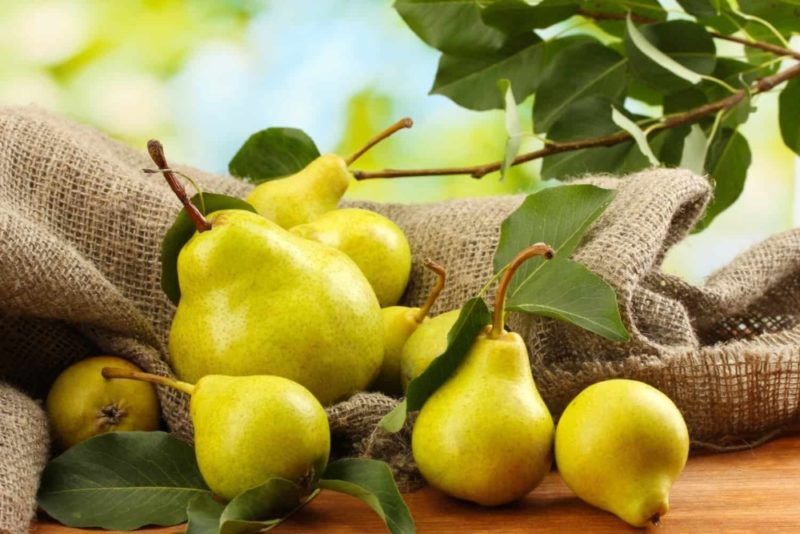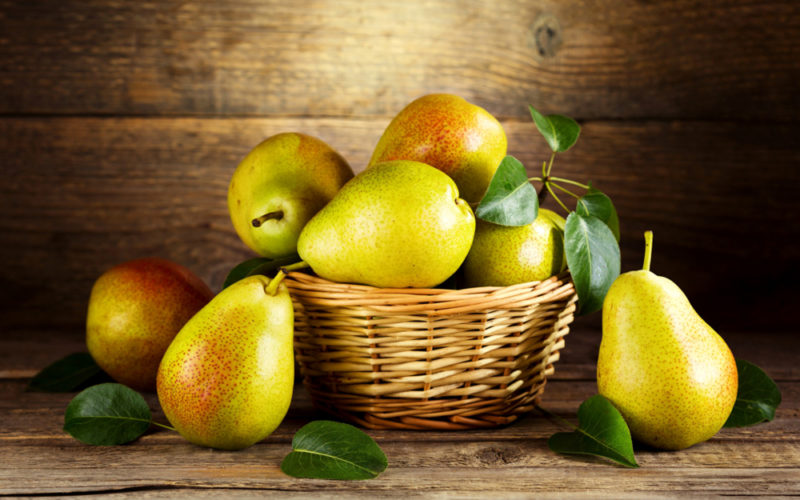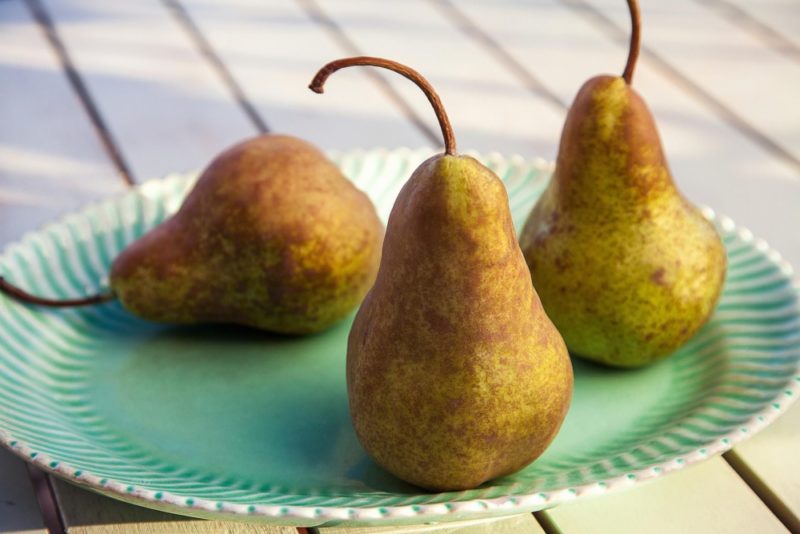Between the concepts of “sweet”, “high-calorie” and “harmful” are often put an equal sign, but nature is able to refute this statement by giving sweet, but not high-calorie and healthy pear fruits. Having learned how many calories are in the pear, and comparing this with its nutritional value, many will be pleasantly surprised.
Material Content:
Chemical composition and nutritional value
The chemical composition of pears includes:
- water - 85.7%;
- mono- and disaccharides - 9.8%;
- dietary fiber - 2.8%;
- ash - 0.7%;
- starch - 0.5%;
- organic acids - 0.5%.
Before proceeding to a detailed analysis of all nutrients, it should be noted that the important nutritional value of the fruit lies not only in healthy vitamins and minerals, but also in dietary fiber. So, 100 grams of fresh pear make up 14% of the daily fiber intake.
100 grams of this fruit contains 12.53 g of carbohydrates, 0.86 g of fat and only 0.73 g of protein.
How many calories are in pear?
Those who are very difficult to do without sugar and overcome the cravings for sweets, but want to put their figure in order, getting rid of extra pounds, will help fresh and juicy fruits. So, for example, in an average pear - calories are much less than in a piece of cake or other pastries of the same weight.
Data on the nutritional value of this fruit will be clearer if presented in a table. Then it will not be difficult even to determine the calorie content of the fruit you like by eye.
| Product | Calories, kcal / 100 g | The number of kcal in 1 pc. | ||
|---|---|---|---|---|
| small, 148 g | average, 178 g | large, 230 g | ||
| Fresh pear with peel | 34,7 | 51,4 | 61,8 | 79,8 |
| Pearless Fresh Pear | 32,6 | 48,2 | 58 | 75 |
| Dried pear | 250,6 | |||
| Baked pear | 179,8 | |||
| Sun-dried pear | 246 |
The higher calorie content of dried pears than fresh ones is explained by the weight of the water that the fetus loses, preserving sugar, dietary fiber and other nutrients.
The caloric content of fruits of various varieties may also vary slightly. In nature, there are more than three thousand varieties of pears, but no more than 15 of them can be found on store shelves.
The calories of the most popular ones will be as follows:
- Abbot variety contains 48 kcal per 100 grams;
- in pears Conference - 54.6 kcal / 100 grams;
- the fruits of the Trout variety have the lowest calorie content - 42 kcal / 100 grams.
When buying fruits on the market and not being able to determine their variety, remember that fewer calories are in green pear (42 kcal / 100 g), then yellow (42.9 kcal / 100 g), and the most high-calorie is red (58.3 kcal) / 100 g).
The content of vitamins, trace elements
Knowing how many calories are in the pear, it may seem that the fruit is also “poor” in vitamins and minerals, but not in this case. Of course, there is not a single food product that contains all the necessary nutrients, but many of them are in different amounts in pears.
Among the vitamins, the highest content in the fruits are:
- B9 (folic acid) - a “vitamin of good mood”, which has a beneficial effect on the nervous system and general condition of the body;
- C (ascorbic acid) - the guardian of immunity, activating protective functions.
If we talk about trace elements, then one pear contains more than 350% of the daily norm of boron, which holds calcium in the bones, thereby strengthening them and preventing osteoporosis. Calcium is also quite abundant in these fruits.
Two other important trace elements can be found in sufficient quantities in juicy pears - it is iron and copper. They are actively involved in hematopoiesis and help prevent cancer.
The benefits of fruit for the body
Any fresh vegetable or fruit can bring invaluable benefits to the body. And what is special about the pear, which distinguishes it from other gifts of flora - we learn further.
- Fructose makes pear fruits sweet, which does not require insulin to be absorbed, so this fruit is indicated for people with pancreatic problems or suffering from diabetes.
- Pears are a hypoallergenic product, so it can be included in complementary foods even for babies prone to allergic reactions and skin rashes.
- By the content of folic acid, without which the process of formation of growth and new cells is not possible, the pear overtakes even blackcurrant.
- Pear pulp is rich in potassium ions, which are so necessary for the regeneration of cells, so eating this fruit will help the heart and muscles to function normally.
- The special essential oils and biologically active substances that pear fruits are so rich in turn them into natural antidepressants and increase the body's resistance to viruses and microbes.
- Even in ancient Arab medicine, a pear was used to treat pulmonary diseases, now jam from it and baked fruits help to cure cough more quickly.
- The calorie content of the pear is small, while it gives a long-lasting feeling of fullness, so the inclusion of this fruit in your diet along with adequate physical activity gives fantastic results in weight loss.
Contraindications to the use of pears
A contraindication to the use of a pear can only be its individual intolerance, which is extremely rare. If allergic manifestations occur, then more often it is a reaction to the peel of the fruit, and not to the flesh.
Doctors also recommend limiting or temporarily excluding pears from their diet for people with inflammatory or other chronic diseases of the gastrointestinal tract.
So that eating pears does not provoke bloating and excessive gas formation, as well as problems with stools, you should follow a few simple rules:
- So that the fiber contained in fresh fruits does not irritate the delicate intestinal mucosa, this fruit should not be used on an empty stomach.
- Drinking pears with water, as well as combining them with meat, dairy and sour-milk products, as well as pickles, can become a catalyst for fermentation processes in the intestines.
Pear is ideal as a healthy dessert or snack, which is better to eat 1-1.5 hours after the main meal.
















